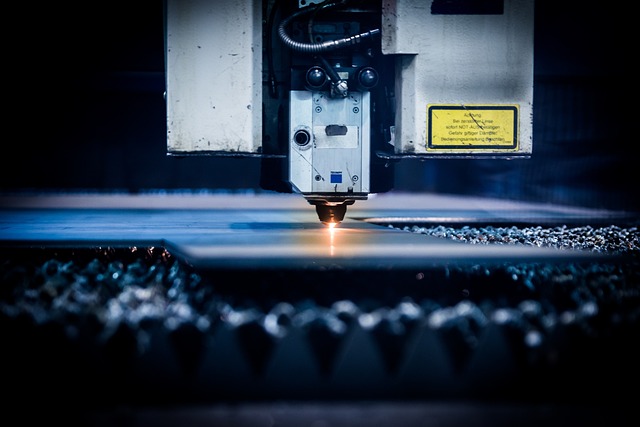Laser skin brightening is a non-invasive dermatology procedure that uses focused light beams (lasers) to rejuvenate and enhance complexion by stimulating cellular activity, repairing photodamage, boosting collagen production, and regulating melanin. Different laser wavelengths target specific depth layers for tailored solutions, with Intense Pulsed Light (IPL) being popular for broad-spectrum treatment of age spots and sun damage. Other lasers like fractional, Q-switched Nd:YAG, and Picosecond lasers address specific skin concerns like dark spots, melasma, and texture issues. Despite potential risks like temporary redness and increased hyperpigmentation, proper aftercare and consultation with a qualified dermatologist can ensure optimal results. Top brands like Lumenis, Cutera, and Candela are advancing laser skincare technologies for more accessible and effective treatments.
“Unveil the secrets of laser skin brightening, a revolutionary non-invasive procedure transforming the skincare industry. This comprehensive guide delves into the science behind lasers, their types, and how they target hyperpigmentation. We explore the benefits, risks, and what to expect during treatment, offering insights for prospective candidates. From popular brands to post-care tips, discover the latest in laser skin treatments, leaving you with a radiant, even complexion.”
Understanding Laser Skin Brightening: Unveiling the Science Behind It

Laser skin brightening, a revolutionary advancement in dermatology, is more than just a cosmetic procedure; it’s a scientific approach to rejuvenating and enhancing the complexion. This treatment involves using focused beams of light from lasers to stimulate cellular activity and target specific pigmentation issues. The science behind it delves into photodamage repair, collagen production, and melanin regulation. By precisely targeting the skin, laser treatments can break up stubborn melanin deposits, reduce age spots, and even out skin tone without causing significant downtime or side effects often associated with traditional skin lightening methods.
The process leverages the unique properties of different laser wavelengths to interact with various depth layers of the skin. For instance, Intense Pulsed Light (IPL) lasers, a popular choice for skin brightening, emit broad-spectrum light that targets melanin in the epidermis and dermis, leading to improved skin texture and a more radiant appearance. As technology advances, new laser skin treatments emerge, offering tailored solutions for different skin types and concerns, solidifying their place as go-to Laser Skin Treatments in the beauty industry.
Types of Lasers Used for Skin Brightening: A Comprehensive Overview

In the realm of laser skin treatments, various types of lasers are employed for achieving a brighter and more even complexion. The choice of laser depends on the specific skin concerns and desired outcomes. One commonly used laser for skin brightening is the Intense Pulsed Light (IPL) laser. IPL treats conditions like age spots, sun damage, and uneven skin tone by emitting light energy that targets melanin, resulting in a more radiant and uniform skin appearance.
Another popular option is the fractional laser, which works by creating tiny perforations in the skin to stimulate collagen production. This process helps reduce hyperpigmentation and improves overall skin texture. For targeted treatment of dark spots and melasma, Q-switched Nd:YAG lasers are often recommended. These lasers emit short pulses of light that break up pigmented cells, allowing for their safe removal without damaging the surrounding skin. Each laser technology offers unique advantages, catering to different needs in the pursuit of a brighter, more youthful complexion.
Benefits and Potential Risks: Weighing the Pros and Cons

Laser skin treatments for brightening have gained popularity due to their promising results in reducing hyperpigmentation and improving skin tone. One of the key benefits is their ability to target specific areas, offering a precise and effective way to even out skin discoloration. Lasers can penetrate the skin’s deeper layers, stimulating collagen production and breaking down melanin clusters responsible for dark spots. This non-invasive procedure offers a relatively quick recovery time compared to other cosmetic surgeries.
However, like any medical procedure, laser skin treatments also come with potential risks. Common side effects include temporary redness, swelling, and sensitivity to sunlight. For individuals with lighter skin tones, there’s a higher risk of post-inflammatory hyperpigmentation if not performed correctly. It’s crucial to consult with a qualified dermatologist who can assess your skin type and condition, ensuring the best possible outcome while minimising risks such as skin irritation or blistering.
The Process: What to Expect During and After a Laser Session

During a laser skin brightening treatment, a specialized device emits precise pulses of light that target melanin in the skin. This process effectively breaks up excess melanin clusters, which are responsible for uneven skin tone and hyperpigmentation. The laser energy penetrates the skin’s surface, stimulating fibroblasts to produce collagen and elastin—key components for maintaining skin elasticity and a youthful glow.
After the session, you might experience temporary redness and mild swelling, similar to a sunburn. This typically subsides within 24-48 hours. It’s crucial to follow your dermatologist’s aftercare instructions, which may include using moisturizing creams and avoiding direct sunlight. Results vary depending on the treatment area and individual skin type, but many patients notice a gradual improvement in skin texture and tone over several weeks. Regular maintenance sessions may be recommended for long-lasting results with Laser Skin Treatments.
Candidate Selection: Determining If Laser Skin Brightening is Right for You

When considering laser skin brightening, or any form of laser skin treatments, understanding your suitability is key. This non-invasive procedure is designed to target hyperpigmentation and uneven skin tone, making it a popular choice for those seeking an even, radiant complexion. However, not everyone is a candidate for this treatment.
Factors like skin type, the severity of hyperpigmentation, and overall health play significant roles in determining if laser brightening is right for you. It’s essential to consult with a dermatologist who can assess your specific needs. They will consider your medical history, current medication, and any previous skin treatments to ensure laser skin brightening is safe and effective for your unique case.
Post-Treatment Care: Tips for Optimal Results and Recovery

After a laser skin brightening treatment, proper post-care is essential for achieving optimal results and ensuring a smooth recovery. Firstly, it’s crucial to follow any specific instructions provided by your dermatologist or clinic. This may include using recommended topical products, such as soothing creams or sunscreens, to alleviate any temporary redness or sensitivity. Avoid strenuous activities and direct sunlight immediately after the treatment, as these can irritate the skin.
During the recovery period, maintain good hygiene practices by gently cleansing the treated area with mild, fragrance-free products. Stay hydrated by drinking plenty of water to support skin healing. Remember that laser skin treatments may cause temporary redness, swelling, or peeling—all normal parts of the process. Be patient and consistent with your post-care routine, as it takes time for the skin to rejuvenate and show visible improvements in brightness and tone.
Popular Laser Brands and Technologies in the Market Today

In the realm of laser skin treatments, several renowned brands and technologies have emerged as game-changers in the skincare industry today. One prominent player is Lumenis, a leading innovator offering a diverse range of lasers for various cosmetic procedures. Their Intense Pulsed Light (IPL) technology is widely used for skin brightening and rejuvenation, targeting pigmented spots with precision. Another popular choice is Cutera, known for its advanced Infrared (IR) and Q-switched Nd:YAG lasers, which effectively treat age spots and tattoos without causing significant downtime.
Additionally, Candela, a pioneer in laser technology, has introduced the Picosecond Laser, delivering ultra-fast pulses to break up pigmented stains while minimizing heat damage. This modern approach ensures faster recovery times and more comfortable patient experiences. These leading brands continuously drive innovation, making laser skin treatments increasingly accessible and effective for folks seeking glowing, radiant complexions.
